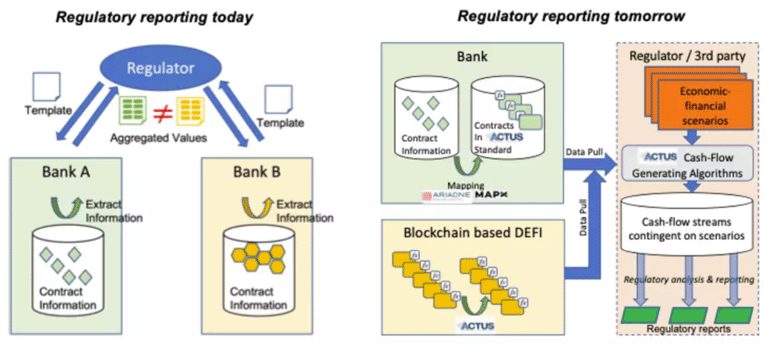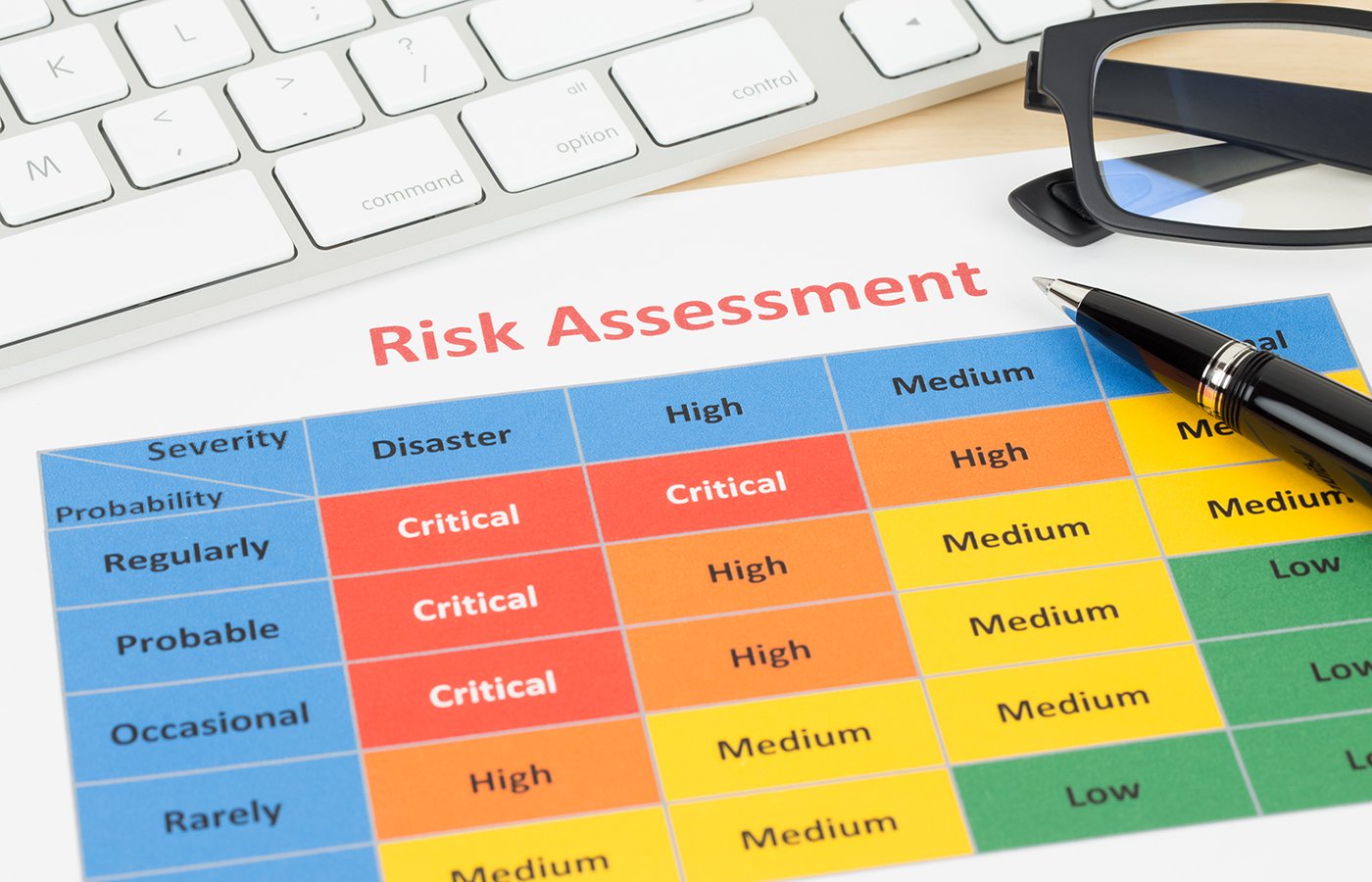Data
Friday, April 26, 2024
By Michael Shashoua
A more stable financial system emerged from the global crisis of 2008 and has proved to be resilient in the face of subsequent shocks. But one provision of the Dodd-Frank Act, the 2010 U.S. law that codified key post-crisis reforms, remains a work in progress after not being executed as thoroughly as its advocates had envisioned.
The issue revolves around collection and analysis of financial institution and market data to alert regulators to potential systemic vulnerabilities before they morph into full-blown crises. Although the vehicle that Dodd-Frank created for that purpose, the U.S. Treasury Department’s Office of Financial Research (OFR), has a now-sizable body of work, Allan Mendelowitz has for years been campaigning for data standards, collectively called ACTUS, to help close remaining analytical gaps.
He is getting closer to the goal. The OFR, among others, has begun making use of ACTUS.
“I believe ultimately the logic of what we’ve presented is so compelling that it will become the norm at some point,” Mendelowitz said recently. “It’s taking much longer than anticipated.”
ACTUS is an acronym for Algorithmic Contract Types Unified Standards, reflecting the assumption that contracts are fundamental to financial instruments and transactions. Contracts’ diverse and largely unstructured nature can limit visibility into counterparty risks – a costly weakness exposed in the aftermath of the 2008 Lehman Brothers bankruptcy.
Allan I. Mendelowitz
However, as explained on the ACTUS website, “The vast majority of the relevant financial contracts are built on a manageable number of underlying mechanisms [and] follow a limited number of patterns. The goal of ACTUS is to break down the diversity in financial instruments into a manageable number of cash flow patterns – so-called Contract Types.”
ACTUS abstracts financial contracts and uses algorithms to show when payments should be made and what is owed throughout the life of contracts. “That's the starting point for almost everything in a bank,” Mendelowitz stated.
Mendelowitz is president of the ACTUS Financial Research Foundation and the ACTUS Users Association. Incorporated in 2015 and structured as nonprofits, and with open-sourced software, they are responsible for the intellectual property and further development of the ACTUS Data Standard and ACTUS Algorithmic Standard and maintenance of the Contract Types.
A 2018 Journal of Risk Finance paper by Mendelowitz and Willi Brammertz, an ACTUS board member who had previously co-authored Unified Financial Analysis: The Missing Links of Finance, described the ACTUS project as “a new approach to financial analytics that clearly separates the deterministic components of finance, which can be standardized from the stochastic elements that cannot be standardized.”
Brammertz also contributed a chapter to Financial Analysis and Risk Management: Data Governance, Analytics and Life Cycle Management (2013), The Office of Financial Research and Operational Risk, describing the Contract Types concept as “overrid[ing] the cherished yet unexamined separation of data and algorithms, which lies at the core of the observed data chaos in banks.”
A former chairman of the Federal Housing Finance Board, Mendelowitz was one of a number of policy experts and academics who had lobbied for creation of an OFR-type entity. That office’s first director, former Morgan Stanley chief U.S. economist and current NYU Stern School of Business clinical professor Richard Berner, caught flak from some Congress members who argued that the data-collection mandate was too broad and vulnerable to cyberattacks. Requests for additional funding were resisted both during and after Berner’s 2013-2017 tenure.
Under then acting director Ken Phelan, who was also Treasury’s chief risk officer, the OFR in 2018 “sharpened its focus” on supporting the Financial Stability Oversight Council (FSOC), the panel of top regulators put in place by Dodd-Frank and chaired by the secretary of the Treasury.
In a December 2020 Brookings Institution report, Fixing Financial Data to Assess Systemic Risk, Greg Feldberg of the Yale School of Management and Yale Program on Financial Stability concluded that despite OFR initiatives “to identify risks and fill blind spots so regulators would have a broader view of ‘who owes what to whom’ across the financial system . . . financial data today remain incomplete and often not fit for purpose. Legacy data-collection technologies, old-school thinking, and bureaucratic turf fights continue to hinder the authorities’ ability to monitor systemic risks.”
Feldberg recommended that the incoming Biden administration “remove the roadblocks that have gotten in the OFR’s way for the past 10 years. Those roadblocks include a lack of support from Treasury, where it sits organizationally; sometimes aggressive undermining by private industry and even other FSOC member agencies; and defunding and silencing under the Trump administration.”
The most recent, permanent OFR director, Dino Falaschetti, stepped aside in 2022, leaving James Martin, deputy director for operations and chief operating officer, as acting director. Ron Borzekowski was nominated early last year by President Biden to lead the OFR but has not been confirmed by the Senate. Senator Jack Reed, Democrat of Rhode Island, lamented that ongoing vacancy in a talk to an ACTUS conference last June.
Among signs of progress for ACTUS, in 2020 it was one of 14 companies – alongside such data and technology giants as FIS, Palantir and S&P Global – awarded contracts in a Federal Deposit Insurance Corp. Rapid Prototyping Competition.
A Swiss regulatory reporting and systemic-risk analysis project, DaDFiR3 (Data Driven Financial Risk and Regulatory Reporting), has adopted ACTUS as part of an architecture that includes distributed ledger, big data and state-of-the-art analytics technologies. (The project leader, Dr. Henriette Elise Breymann of the Zurich University of Applied Sciences, is secretary of the ACTUS Financial Research Foundation and ACTUS Users Association.)
Crediting ACTUS as a “key enabler,” the Swiss National Science Foundation provided details of DaDFiR3 last December and presented the system on February 15 at the 2nd International Workshop on Automated Regulatory Financial Reporting in Zurich.

Source: DaDFiR3
According to an OFR announcement as of November 2022, ACTUS and two other technical standards – ISO 20022 and FIX – were able to “provide metadata definitions for each of the five asset classes” (equities, debt, options, warrants, and futures) in the OFR Financial Instrument Reference Database (FIRD). “This allows users to compare definitions used in the financial sector and identify where there are inconsistencies.”
ACTUS’s algorithmic contract standard along with other components “makes the text searchable and the relationships and properties clear,” says the FIRD web page. “The current content forms a foundation to which the public sector and private sector can begin to align financial instrument data.”
That complements the OFR’s long-standing role in promoting legal entity identifiers (LEIs) to standardize identification of counterparties and aid in analysis of risk concentrations.
Mendelowitz believes that the OFR could theoretically have flagged the March 2023 collapse of Silicon Valley Bank ahead of time. As recently as November 2022, SVB had gotten high grades from Federal Reserve examiners. If the ACTUS standard had been applied, Mendelowitz said, it would have found SVB insolvent in June 2022. If ACTUS were applied in December 2021, it would have revealed “a small possibility” to save SVB at that time by selling interest rate swaps to hedge its risk, he added.
Those forward-looking analyses would have been like “hitting you between the eyes with a two-by-four,” Mendelowitz said.
The 2020 FDIC “tech sprint” involved access to the full balance sheet of a $2 billion bank. “This was an ideal case where something that standardizes balance-sheet products for banks could be shown to be something you should look at,” said Jeff Braswell, chairman of the ACTUS Financial Research Foundation.
ACTUS’s team could associate algorithms for financial contracts with an engine for cash flows as a basis for risk analysis. The competition had developers looking at the contracts, assets and liabilities of that relatively small bank. The contracts were mapped using the ACTUS data format, Braswell said, and then applied to credit risk scenarios.
The acceptance by and experiences with the FDIC program and others are welcome boosts for ACTUS, says Mendelowitz. The next step is adoption by the industry, and he views small banks as more likely to step up before larger firms do.
“When you look at the billions the financial world wasted creating data warehouses and data lakes to get around the total chaos in their data,” he says, “at some point they’re going to have to step up and become more efficient . . . If the DeFi [decentralized finance] world is going to compete with that, they have to be able to scale.”
ACTUS will host its annual conference on May 15 in Washington, D.C., where it will spotlight use cases including transaction processing, accounting, risk management and regulatory reporting.
•Bylaws •Code of Conduct •Privacy Notice •Terms of Use © 2024 Global Association of Risk Professionals




